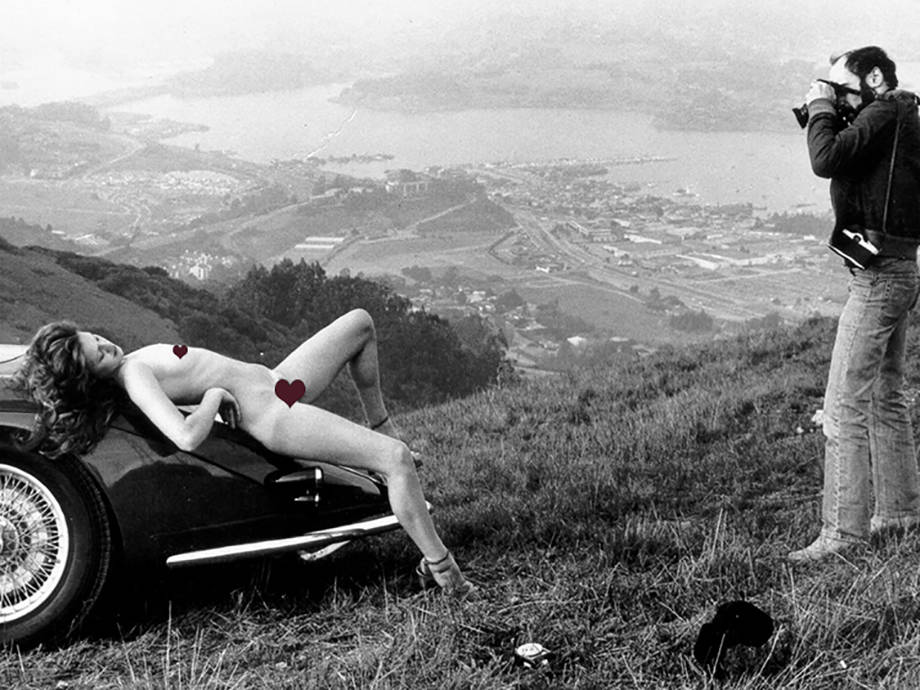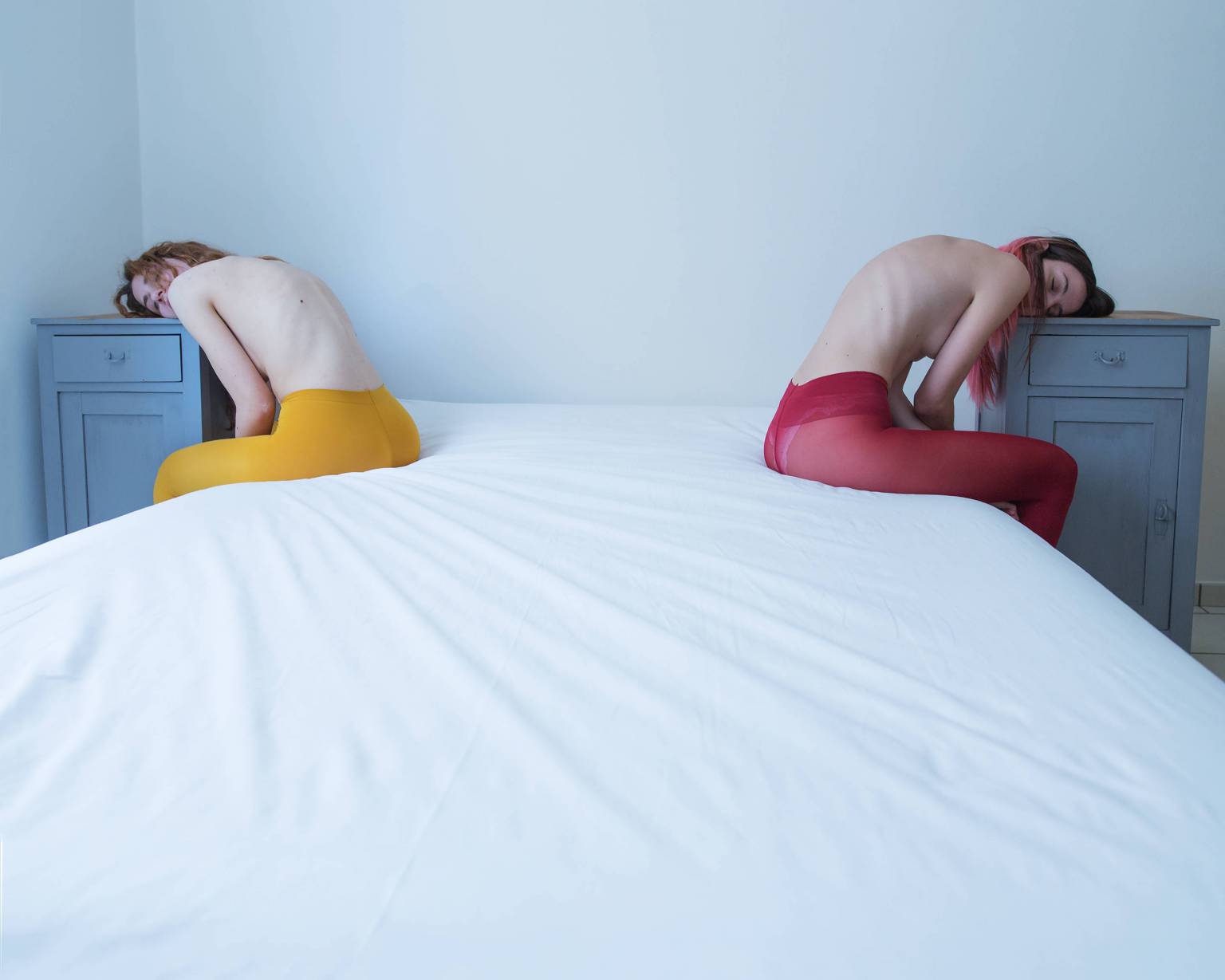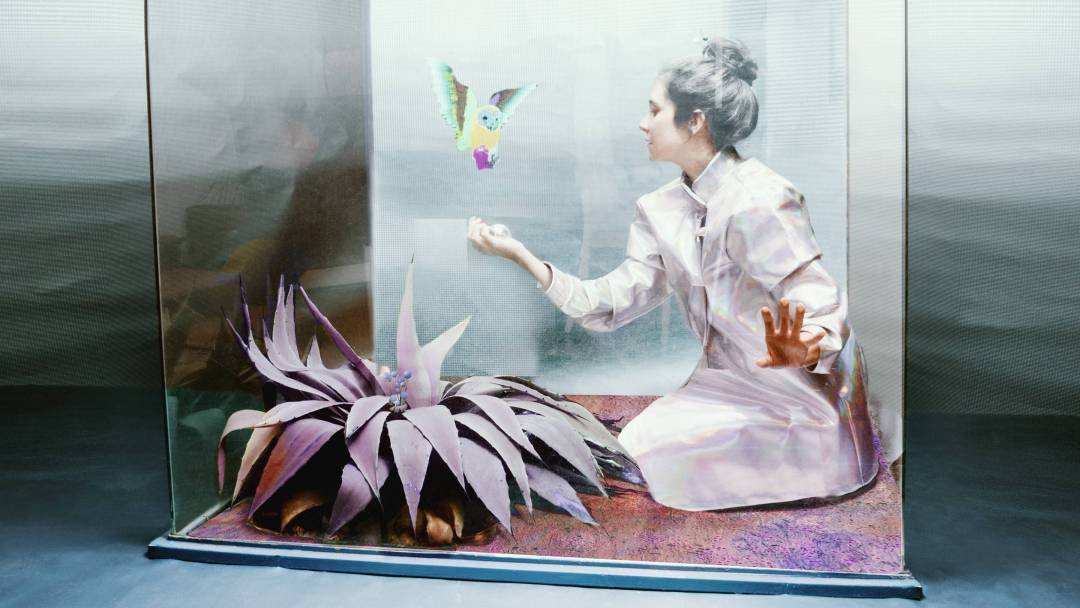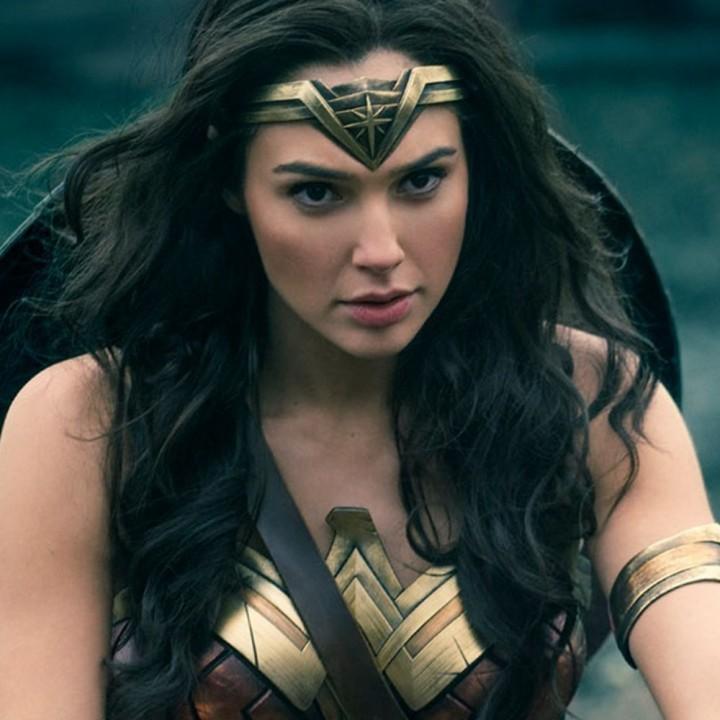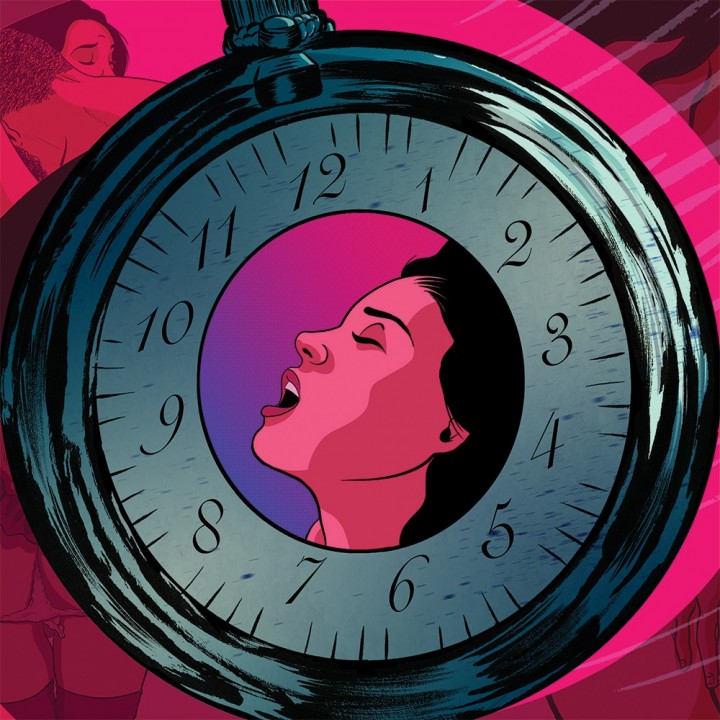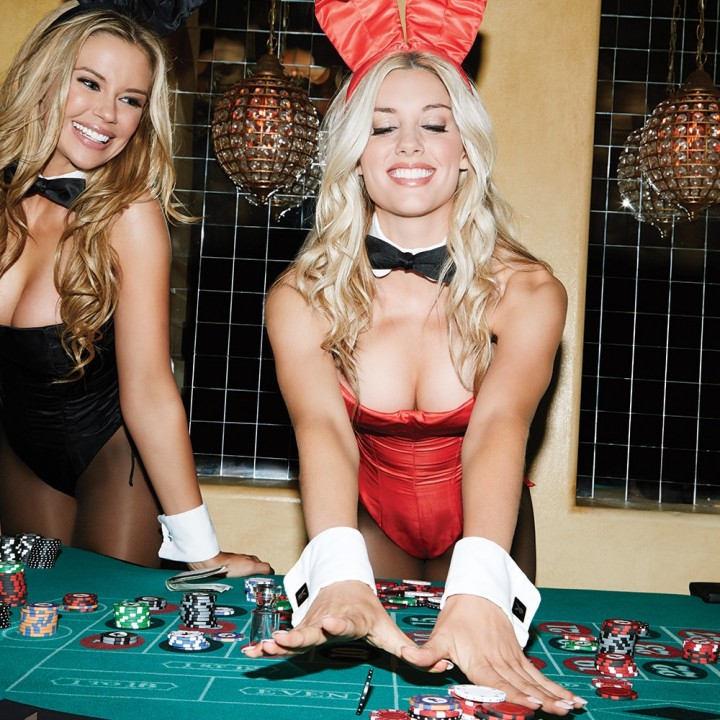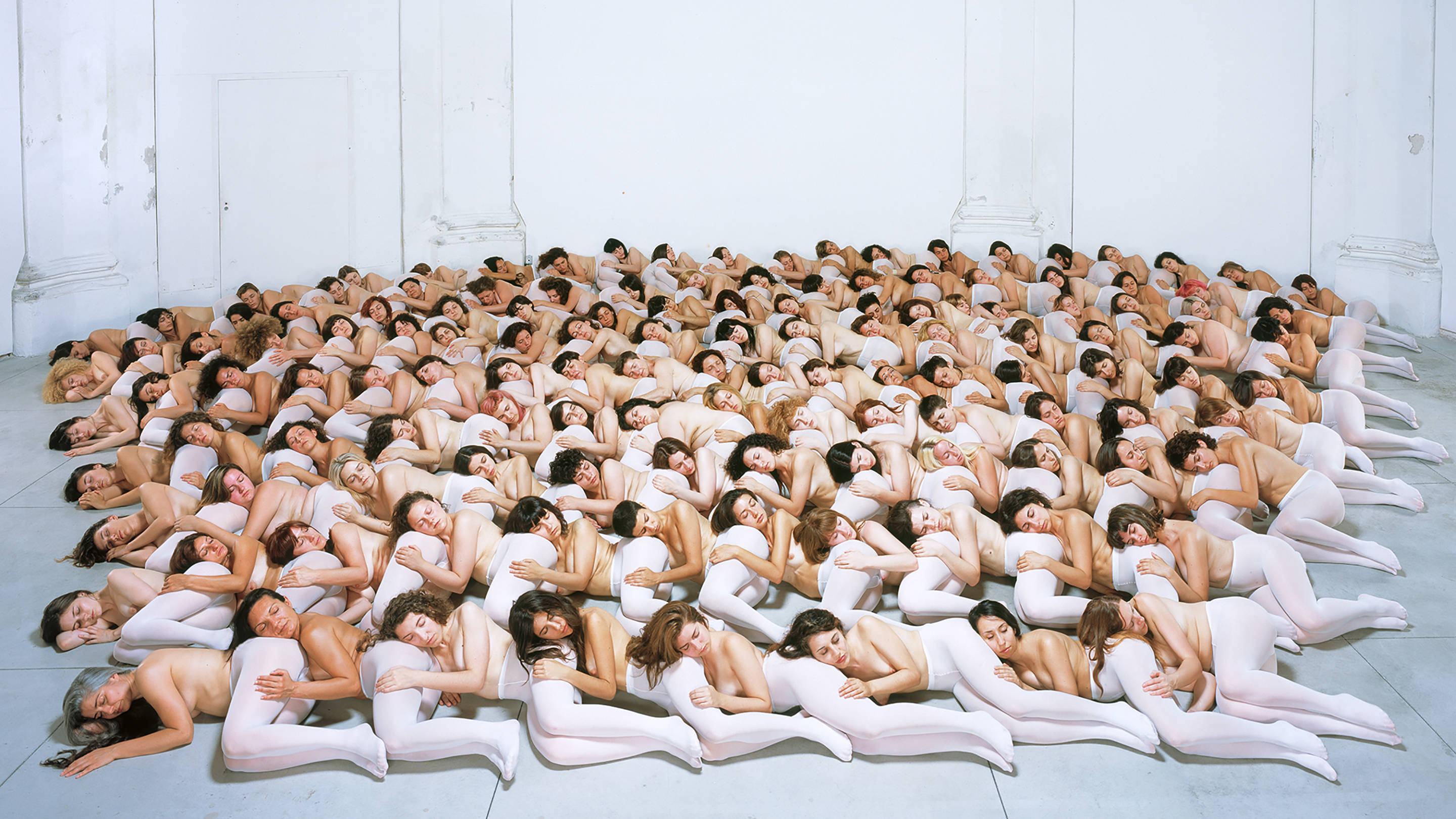
Capturing the Absurdity in Eroticism
Playboy explores Giuseppe Palmisano's playful photographs
Courtesy Giuseppe Palmisano
Giuseppe Palmisano didn’t always want to be a photographer. He wanted to be a clown.
His career began when he turned 20, bought a cheap Nikon D60 camera, quit university and relocated from Puglia, Italy to Rome. Over the next few years, he moved towns five times and called a dozen different addresses home while touring with a theatrical company. It was then that he began experimenting with art, photographing the “strange things”—animals, objects, and “anything that caught my attention with its shape or color”—he saw during his travels.
“At the time, I thought I would never photograph human subjects, but then things changed.” Things changed in 2012 when he began photographing his lover, his first female subject, in an attempt to “catch all her sensual shades”. But when the relationship imploded, he discovered the style that he keeps twisting and turning to this day—a style that the press affectionately calls “Absurd Eroticism”.
“At the time, I thought I would never photograph human subjects, but then things changed.” Things changed in 2012 when he began photographing his lover, his first female subject, in an attempt to “catch all her sensual shades”. But when the relationship imploded, he discovered the style that he keeps twisting and turning to this day—a style that the press affectionately calls “Absurd Eroticism”.

Instead of photorgraphing seductive, private moments, he turns the florescent lights on and gives his models the freedom to do whatever they please, no matter the peculiarity of it all. He works to erase eroticism even if he is capturing a half-naked form. As opposed to dressing lithe bodies in garters and lace, women can be seen clad in bright-hued tights stuffed under couch cushions, hanging upside down or wearing lampshades as hats. Faces are purposefully obscured, expressionless.
“I have often been accused of portraying women as objects, but what I really want is to give a woman control over her body; it’s a game in which she can decide to become anything—even a lamp.” In Palmisano’s world, the impossible is possible, even in the most mundane of circumstances. But instead of removing elements of eroticism, he studies the many forms eroticism can take through colors (school bus yellow, dusty rose) and concepts (such as voyeurism).
The setting may be domestic, but these women aren’t taking on the typical role of housewife. Instead, suburbia and its many furnishings serve as both props and characters, morphing with material items in an effort similar to the way a chameleon takes to a tree branch. “I like to create these static pictures that have so much life inside, photos that express abandonment and a sort of ‘panism’—a connection with the house and surrounding environment,” he explains.
“I have often been accused of portraying women as objects, but what I really want is to give a woman control over her body; it’s a game in which she can decide to become anything—even a lamp.” In Palmisano’s world, the impossible is possible, even in the most mundane of circumstances. But instead of removing elements of eroticism, he studies the many forms eroticism can take through colors (school bus yellow, dusty rose) and concepts (such as voyeurism).
The setting may be domestic, but these women aren’t taking on the typical role of housewife. Instead, suburbia and its many furnishings serve as both props and characters, morphing with material items in an effort similar to the way a chameleon takes to a tree branch. “I like to create these static pictures that have so much life inside, photos that express abandonment and a sort of ‘panism’—a connection with the house and surrounding environment,” he explains.
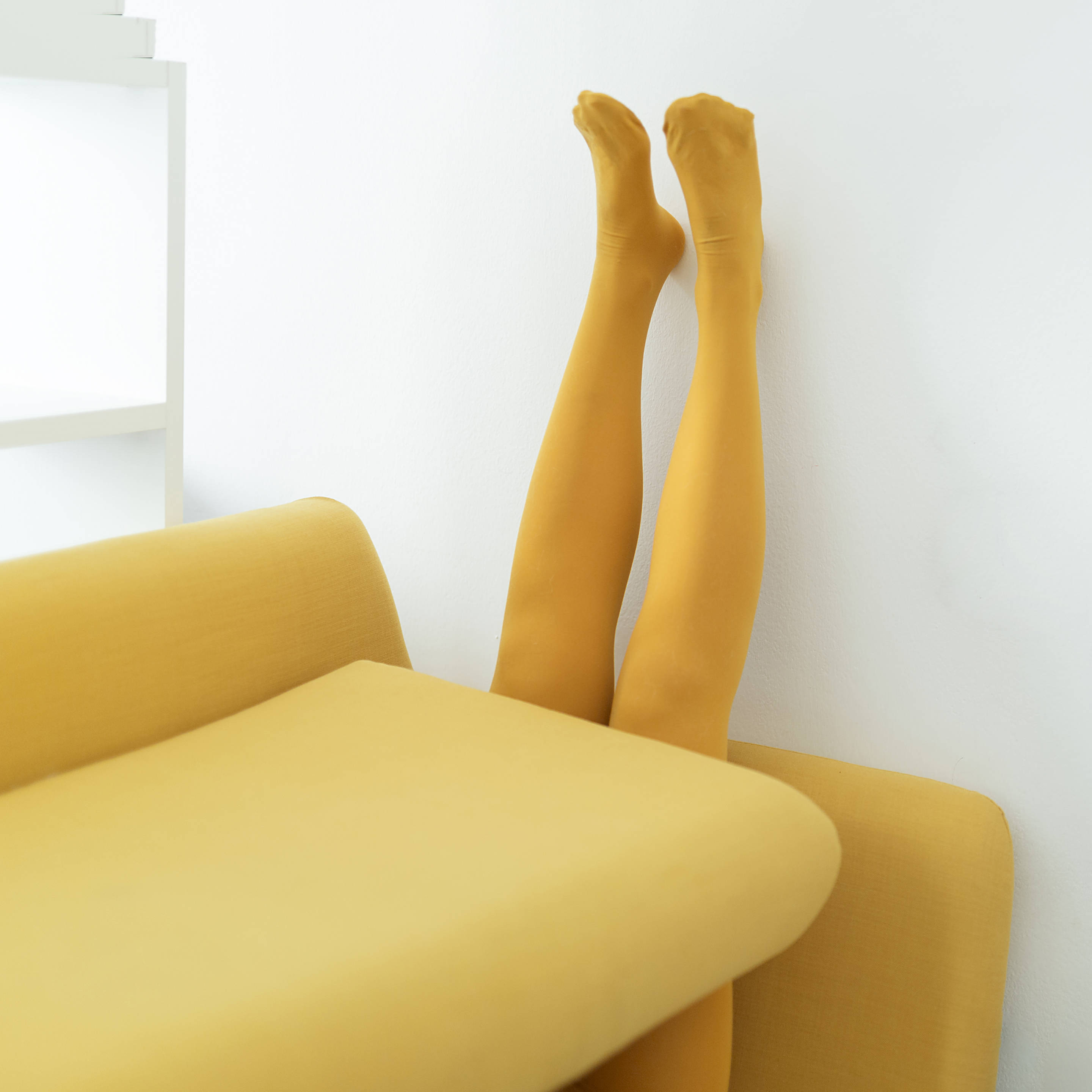
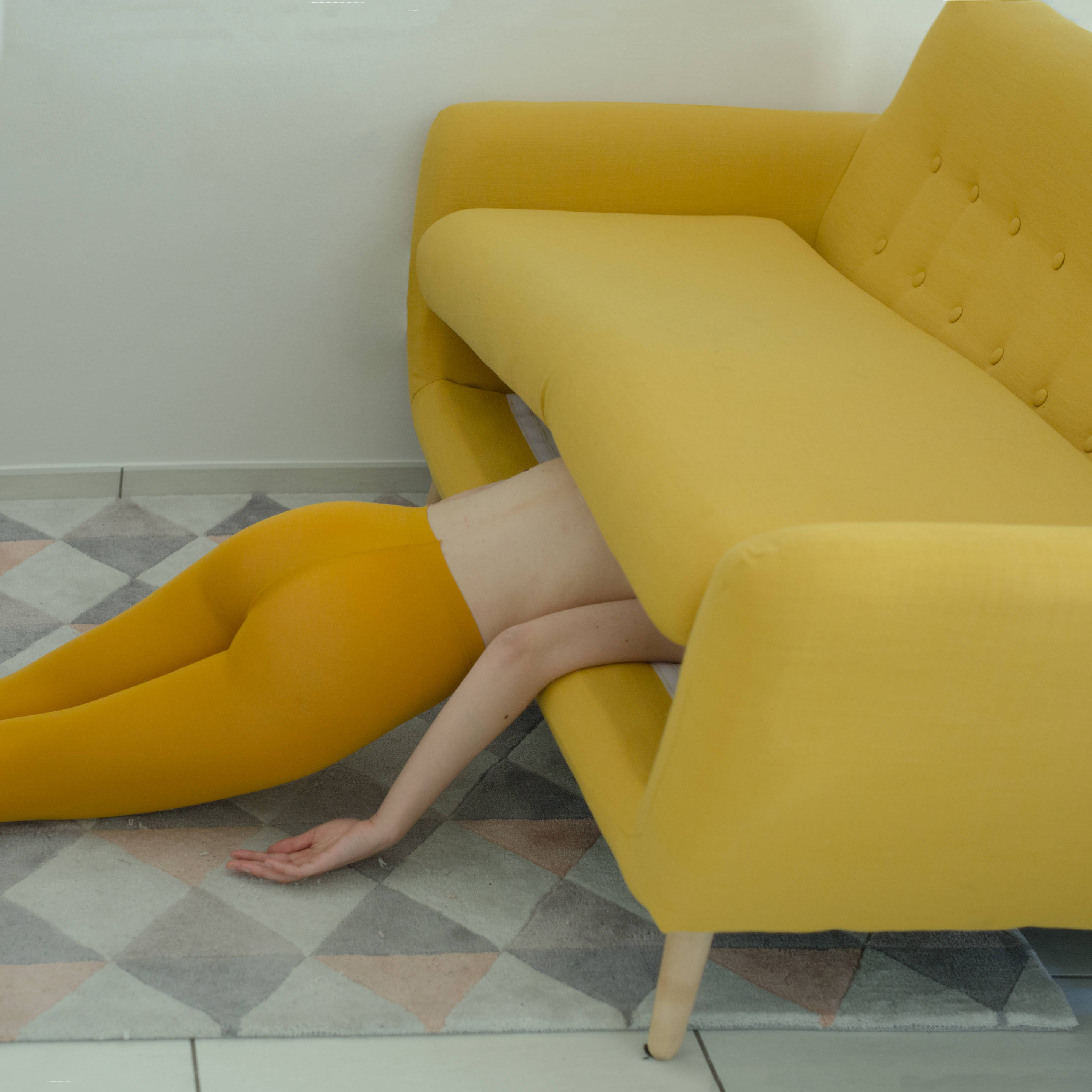
“In my head, when I see my photos years later, I think that women are really bodies waiting for something: they stay in their homes to wait, sometimes they are left in the house like memories.” In his head, his models are players in an elaborate and beautiful game. For example, in 2016 he debuted his first performance piece, ctrl+y, which plays on the themes of age and growth, as performers strip and dress over and over again before the oldest buries the youngest, planting peach blossoms to celebrate the end of a chapter in one’s life.
In 2017, Palmisano found himself overcome by a sensation of solitude, so he sent out a call on social media for models. The result: a project titled Vuoto (or “emptiness” in Italian). The first photo, “Vuoto n.1” (on permanent exhibit at BDC28 in Parma, Italy) features 150 white women wearing white tights on Italy’s Adriatic coast. In a display of a lack of diversity, “Vuoto n.2” frames 12 black models sporting one sole accessory: black tights. The third installment is currently in the works.
While his work continues to evolve, he is sure that the consistent improvisation and humor—characteristics that he has held onto since his theatrical days—evident throughout his work ties it all neatly together. “Theater taught me a lot of things that have affected how I perceive art and how I conceive photos,” he says. “The ability to wait, to work hard, the silence, the noise, the climax—I owe everything to theater.”
In 2017, Palmisano found himself overcome by a sensation of solitude, so he sent out a call on social media for models. The result: a project titled Vuoto (or “emptiness” in Italian). The first photo, “Vuoto n.1” (on permanent exhibit at BDC28 in Parma, Italy) features 150 white women wearing white tights on Italy’s Adriatic coast. In a display of a lack of diversity, “Vuoto n.2” frames 12 black models sporting one sole accessory: black tights. The third installment is currently in the works.
While his work continues to evolve, he is sure that the consistent improvisation and humor—characteristics that he has held onto since his theatrical days—evident throughout his work ties it all neatly together. “Theater taught me a lot of things that have affected how I perceive art and how I conceive photos,” he says. “The ability to wait, to work hard, the silence, the noise, the climax—I owe everything to theater.”

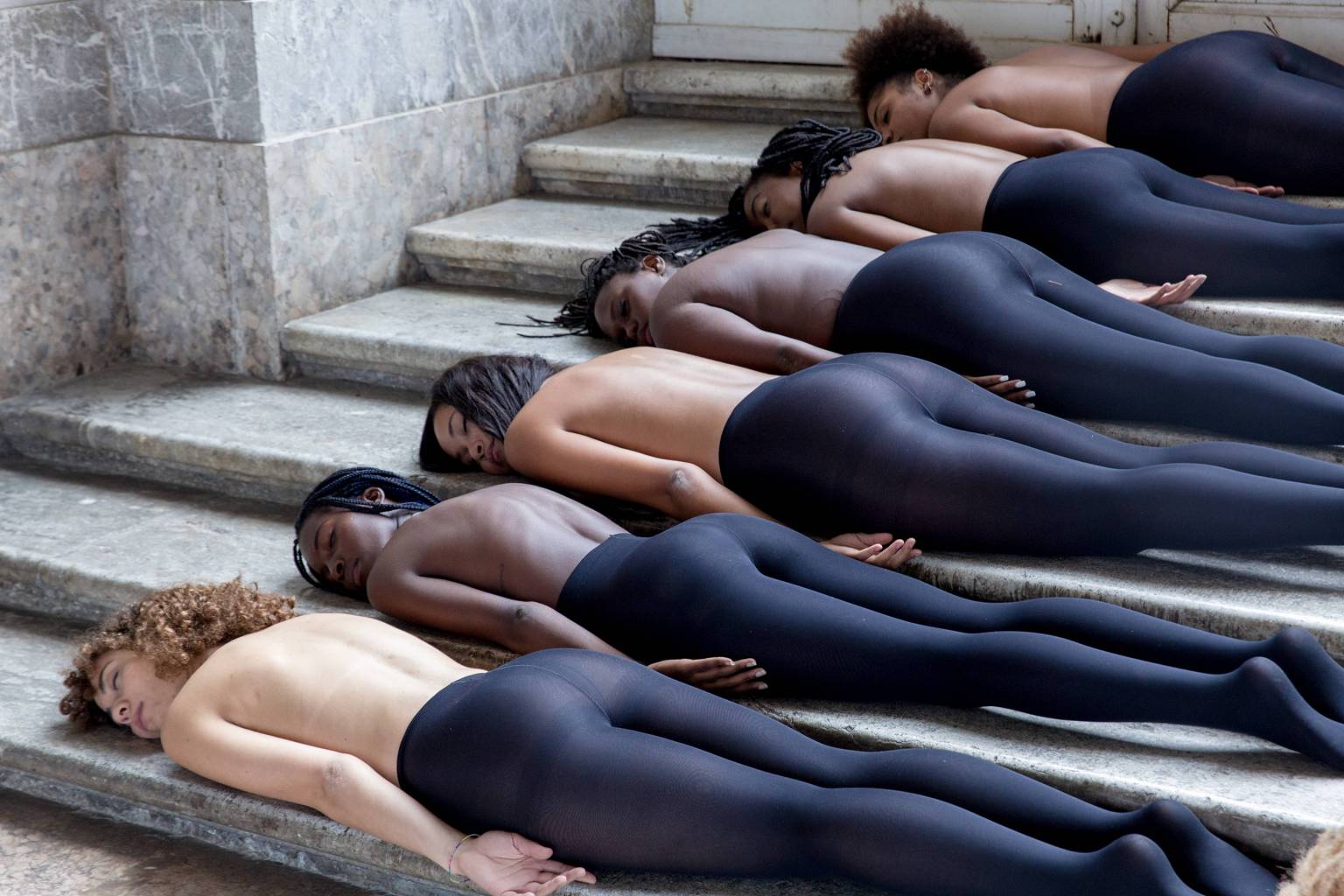
From Porn to Food: The Tantalizing Effect of Carl Kravats' Lens
Carl Kravats, the famous nude pictorial photographer of the 1970s, has moved on to new subjects
